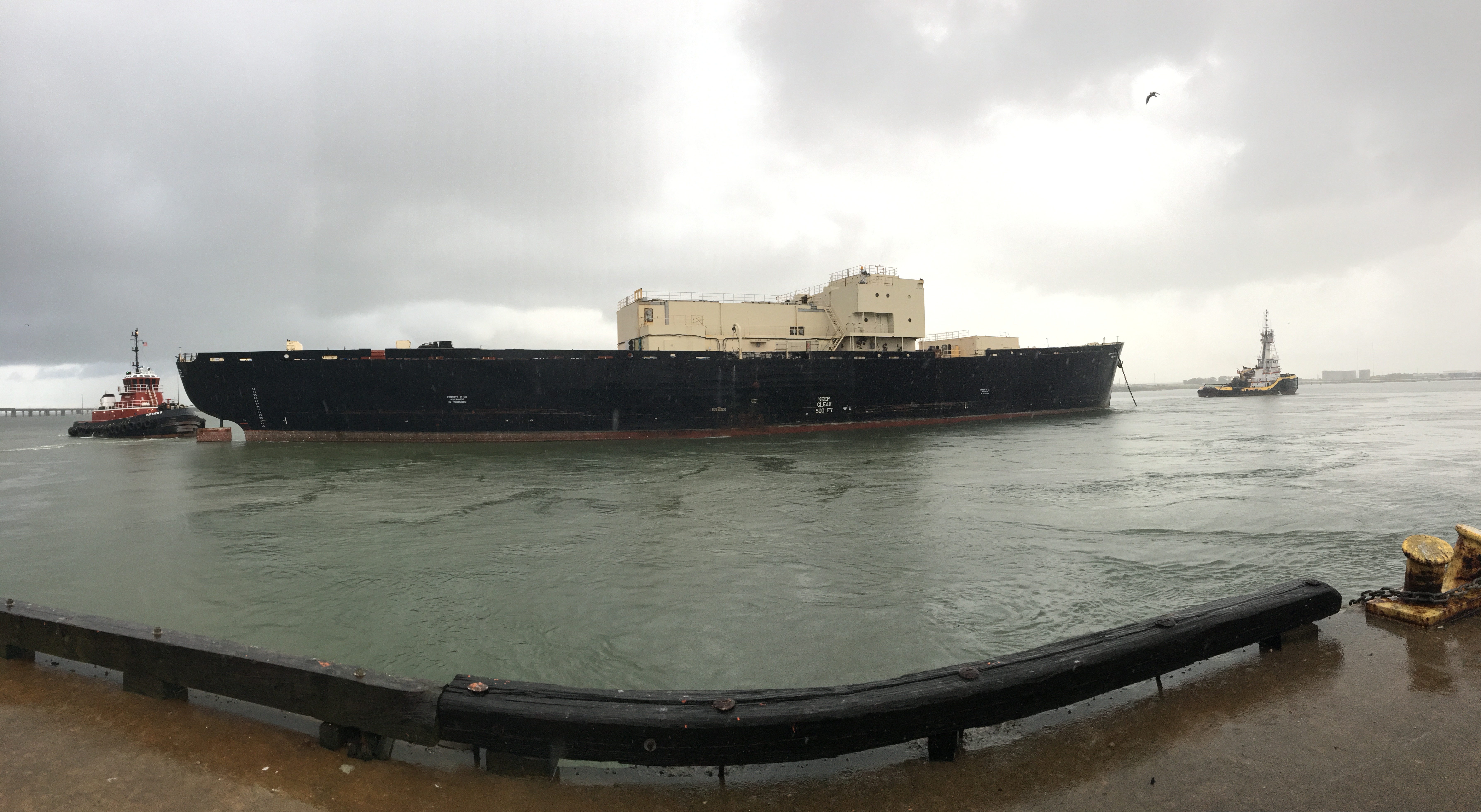In 2019, the U.S. Army Corps of Engineers celebrated the completion of the decommissioning and dismantling of the historic STURGIS Barge which was formerly the world’s first floating nuclear power plant. The completion of the project was achieved when the final section of the former vessel was brought ashore for processing and recycling at the International Shipbreaking facility in the Port of Brownsville, Texas.

The STURGIS is towed from the Galveston pier to the shipping channel September 25, 2018 as it heads toward Brownsville, Texas for final shipbreaking and recycling.
BACKGROUND:
STURGIS had a unique life since first being built in the 1940s as a World War II Liberty Ship, the SS Charles H. Cugle. After serving in World War II, the ship was converted into the world’s first floating nuclear plant in the 1960s, housing the MH-1A nuclear reactor. The MH-1A was used to generate electricity in the Panama Canal Zone from 1968 to 1976.
In 2012, its formal decommissioning effort began as part of a broader effort to decommission the Army’s retired nuclear reactors through the DNPPP. After award of the decommissioning project contract, the STURGIS was towed 1,750 miles from Virginia to Galveston, Texas in April 2015 for its final decommissioning.
That decommissioning effort was completed in summer 2018 with the safe removal of all components of the deactivated nuclear reactor and associated radioactive waste, in close coordination with Galveston District, the Marine Design Center, and APTIM Federal Services. The vessel was towed to Brownsville, Texas for final traditional shipbreaking, which was completed in March 2019.
“The project to decommission and dismantle a floating nuclear power plant was truly unprecedented,” said Brenda Barber, project manager. “This unique, one-of-a-kind, historical power plant was never designed to be taken apart, and the available information about its construction was lacking in many details. The hazards that required mitigation dictated a painstaking and deliberate process to avoid any release to the environment and the community, and to protect the health and safety of the workers involved.”